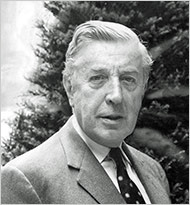
Sir Frederick William Mallandaine Ashton was a British ballet dancer and choreographer. He also worked as a director and choreographer in opera, film and revue.

Dame Margaret Evelyn de Arias DBE, known by the stage name Margot Fonteyn, was an English ballerina. She spent her entire career as a dancer with the Royal Ballet, eventually being appointed prima ballerina assoluta of the company by Queen Elizabeth II. Beginning ballet lessons at the age of four, she studied in England and China, where her father was transferred for his work. Her training in Shanghai was with Russian expatriate dancer Georgy Goncharov, contributing to her continuing interest in Russian ballet. Returning to London at the age of 14, she was invited to join the Vic-Wells Ballet School by Ninette de Valois. She succeeded Alicia Markova as prima ballerina of the company in 1935. The Vic-Wells choreographer, Sir Frederick Ashton, wrote numerous parts for Fonteyn and her partner, Robert Helpmann, with whom she danced from the 1930s to the 1940s.

Dame Alicia Markova DBE was a British ballerina and a choreographer, director and teacher of classical ballet. Most noted for her career with Sergei Diaghilev's Ballets Russes and touring internationally, she was widely considered to be one of the greatest classical ballet dancers of the twentieth century. She was the first British dancer to become the principal dancer of a ballet company and, with Dame Margot Fonteyn, is one of only two English dancers to be recognised as a prima ballerina assoluta. Markova was a founder dancer of the Rambert Dance Company, The Royal Ballet and American Ballet Theatre, and was co-founder and director of the English National Ballet.

The Royal Ballet is a British internationally renowned classical ballet company, based at the Royal Opera House in Covent Garden, London, England. The largest of the five major ballet companies in Great Britain, the Royal Ballet was founded in 1931 by Dame Ninette de Valois, it became the resident ballet company of the Royal Opera House in 1946, and has purpose built facilities within these premises and was granted a royal charter in 1956, becoming recognised as Britain's flagship ballet company.

The Royal Ballet School is a British school of classical ballet training founded in 1926 by the Anglo-Irish ballerina and choreographer Ninette de Valois. The school's aim is to train and educate outstanding classical ballet dancers, especially for the Royal Ballet and the Birmingham Royal Ballet.
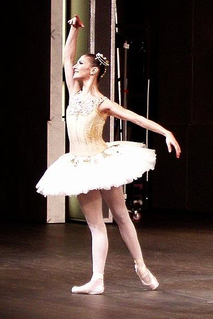
Alina Cojocaru is a Romanian ballet dancer. She was previously a principal dancer with The Royal Ballet and a lead principal with the English National Ballet.
Ronald Hynd is an English choreographer, and in his youth was a ballet dancer.
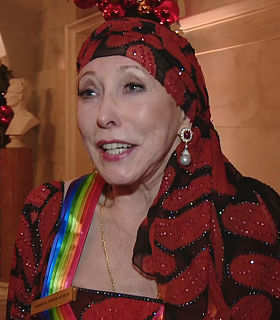
Natalia Romanovna Makarova is a Russian prima ballerina and choreographer. The History of Dance, published in 1981, notes that "her performances set standards of artistry and aristocracy of dance which mark her as the finest ballerina of her generation in the West."
Nadia Nerina was a South African dancer who was "one of the most gifted, versatile, and inspiring ballerinas of The Royal Ballet" during the 1950s and 1960s. She was known "for her technical virtuosity, lightness afoot, effortless-seeming jumps, and joyful charm onstage, especially in comedic roles."
Dame Merle Park is a British ballet dancer and teacher, now retired. As a prima ballerina with the Royal Ballet during the 1960s and 1970s, she was known for "brilliance of execution and virtuoso technique" as well as for her ebullience and charm. Also admired for her dramatic abilities, she was praised as an actress who "textured her vivacity with emotional details."

Lynn Seymour CBE is a Canadian-born retired ballerina and choreographer.
David Blair was a British ballet dancer and a star of England's Royal Ballet during the 1950s and 1960s.
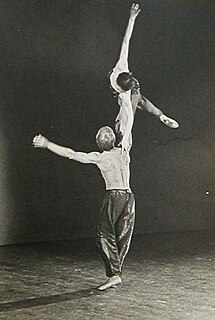
Galina Samsova was a Russian ballet dancer and company director.
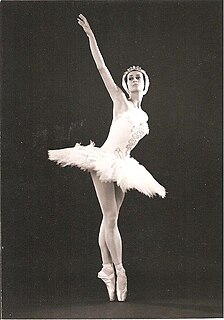
Deanne Bergsma is a South African ballerina, who made her career in the Royal Ballet at Covent Garden. She was born in 1941 and showed early promise as a dancer, She first came to London in 1957 to take up a place in the Royal Ballet School, having been talent-spotted by Claude Newman, former principal dancer and ballet-master of the Vic-Wells Ballet and now a visiting examiner of the Royal Academy of Dance. In two years she had graduated from the school and joined the Royal Ballet company in 1957. She climbed rapidly through the ranks to become a principal ballerina and appeared in a wide array of roles, both classical and contemporary, until her retirement in 1975. This eighteen-year career coincided with an exciting period for the Royal Ballet. Apart from the stream of new works from Ashton and Macmillan the company's resident director-choreographers, it was the heyday of the partnership of Margot Fonteyn and Rudolf Nureyev. The company was touring worldwide and was rarely out of the headlines.
Maryon Lane was a South African ballet dancer who became well known in Britain as a ballerina of the Sadler's Wells Theatre Ballet and as a soloist with the Royal Ballet.
Alexander Marshall Grant was a New Zealand ballet dancer, teacher, and company director. After moving to London as a young man, he became known as "the Royal Ballet's most remarkable actor-dancer in its golden period from the 1940s to the 1960s."
Georgina Parkinson was an English ballet dancer and ballet mistress. She joined The Royal Ballet in 1957 and was promoted to principal dancer in 1962. Best known for dancing 20th-century works, she was a frequent collaborator of choreographer Kenneth MacMillan, and had also created roles for Frederick Ashton. In 1978, she accepted the invitation to become a ballet mistress at the American Ballet Theatre for a year, before assuming the position permanently in 1980. She also performed character roles with the American Ballet Theatre.
Harold Turner was an English ballet dancer, teacher, and ballet master. Widely recognized as "modern British ballet's first male virtuoso," he had an illustrious career as a principal dancer, after which he continued to perform in character roles. He is acknowledged as a key figure in British dance history.
Brian Shaw was a British ballet dancer and teacher. As a leading dancer with the Royal Ballet during the 1950s and 1960s, he was widely regarded as "one of the finest classical male dancers of his generation".
Bryony Jane Susan St John Brind was a British ballerina and principal dancer with the Royal Ballet.